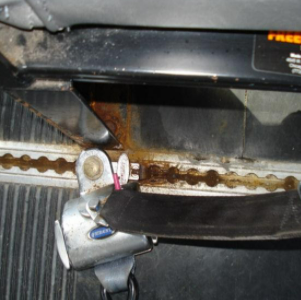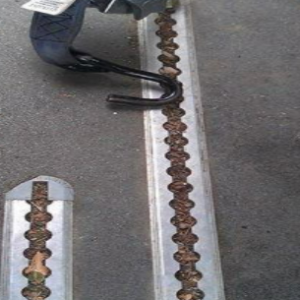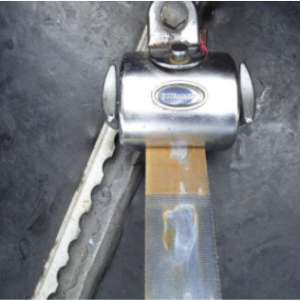Care and Maintenance of ADA Securement Equipment
Care and Maintenance of ADA Securement Equipment
Published on: February 22, 2021
As a transit manager, you are responsible for ensuring that your drivers are inspecting and maintaining the equipment used to serve persons with disabilities. One way to ensure this is to conduct regular spot checks of your drivers (first hand, typically unannounced observations). During the pre-trip inspection, drivers should be inspecting the vehicle’s lift, securements and L-track to ensure safe operation.
One of the areas frequently identified as insufficient during compliance reviews is the condition of the L tracks and securements. Managers and drivers must ensure that all equipment is in proper working condition and is properly maintained, which includes ensuring that:
- “L tracks” are clean and free of all debris.
- Securements are properly stowed, and not left in the tracks.
- Lap belts are properly stowed, and not left out.
Securements left on the floor when not in use can become bent and/or present a tripping hazard for drivers and customers. Also, the aluminum track and the steel track fittings are two different metals. Once they touch, the corrosion process can begin. Add moisture and road salt tracked onto the bus during winter and the process is accelerated. Once corrosion occurs, the securements can “become one” with the L-track — not a good situation. Or, the securement could corrode to the point where it would not fit properly in the track and could loosen, a worse situation, and a risk that is completely avoidable.
Now consider the costs. A poorly maintained securement system could fail at any time, causing the potential for serious injury to passengers.
No one wants a passenger to be injured, nor do we want to deal with the insurance claims and potential lawsuits resulting from the injury. Insurance settlements and lawsuits could put your system at risk of being considered high risk or uninsurable. Additional cost considerations include unnecessary or premature replacement of equipment due to improper maintenance. A single securement costs approximately $85; for eight securements (per vehicle if it is equipped to secure two wheelchairs) your agency could spend as much as $680 to replace the securements in just one vehicle. Add to that the labor and time out of service to replace the securement track.
Transit managers can reduce maintenance costs and safety risks to their system simply by a) knowing proper securement and equipment maintenance procedures and b) conducting regular spot checks to ensure that drivers are following proper procedures.
Below are some pictures showing: securements that have been left in the L-tracks over a period of time and have corroded; a very dirty L-track system; and belts that have been left in the floor. These are compelling reasons why your drivers must stow the securements and straps when not in use.



Maintenance of the securement system will directly impact the longevity of your system’s securements.
This article was published by RLS & Associates.
Login to request a different date or venue for this course — or request a new course entirely.